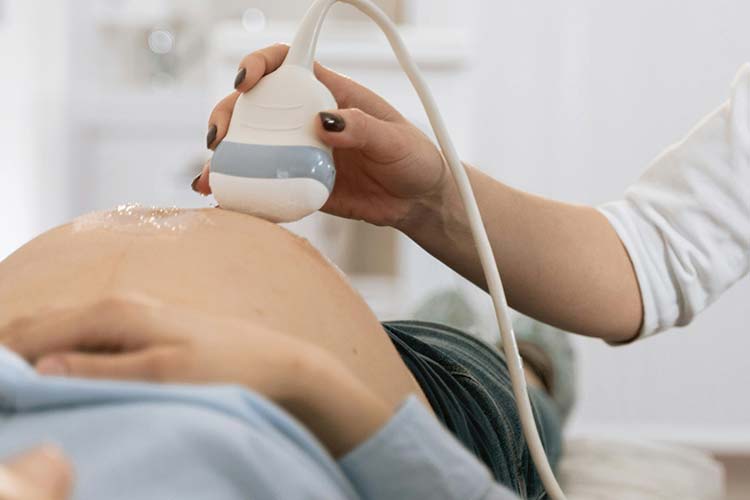This post is also available in:
![]() Español (Spanish)
Español (Spanish) ![]() Français (French)
Français (French)
What is omphalocele?
Omphalocele (pronounced uhm-fa-lo-seal) is a defect or hole that forms when the wall of the middle abdomen is developing. This defect allows a developing baby’s organs to come outside the abdominal cavity. Omphalocele occurs during the first trimester of pregnancy as the embryo is developing.
How common is omphalocele?
Omphalocele occurs in about 2 out of every 10,000 live births.
Why does omphalocele occur?
While developing inside the uterus, a baby’s abdominal organs normally come outside of its abdomen for a short time and rotate, and then return back into the abdomen. When the organs do not properly return into the abdomen, an omphalocele can form. The size of an omphalocele can vary widely.
How is omphalocele diagnosed?
Omphalocele is usually diagnosed before a baby is born (called prenatally), but also can be diagnosed after a baby is born (called postnatally). When diagnosed prenatally, an omphalocele is usually found with an ultrasound at 12 weeks but can be detected earlier. An MRI during pregnancy also can detect an omphalocele.
If a baby has an omphalocele, the mother may have no symptoms. However, she may have elevated levels on a special test called alpha-feto-protein (AFP). Genetic counseling is recommended after diagnosis.
What conditions can occur together with an omphalocele?
While omphalocele can occur on its own, it often is associated with other genetic syndromes or chromosomal abnormalities. Some of the most common conditions include:
- A genetic syndrome called Beckwith-Wiedemann syndrome
- Congenital heart or lung defects
- Chromosome abnormalities, such as trisomy 13, 18, or 21
- Abnormalities of the kidneys, spine, anus, or arms/legs
How is omphalocele treated?
If your child is born with an omphalocele, they will be admitted to the neonatal intensive care unit (NICU) for close monitoring, and possibly breathing and feeding support.
In the beginning, your child’s heart rate and other vital signs will be checked and monitored. Your child may have a covering placed around their abdominal organs (called a “silo”) to protect the organs and keep them healthy.
Eventually, your child will need one or more surgeries to fix the omphalocele and return the abdominal organs safely inside the abdomen. These surgeries may occur right away or over several months after birth, depending on the size of the omphalocele and whether your child has other conditions.
Additional Resources
- https://www.cdc.gov/ncbddd/birthdefects/omphalocele.html
- https://www.cdc.gov/ncbddd/birthdefects/families-support.html
- https://www.owarrior.org/
Authors: Prerana Baranwal, MD and Annemarie Rompca, MD
Editor: Amanda Deacy, PhD
March 2024
This post is also available in:
![]() Español (Spanish)
Español (Spanish) ![]() Français (French)
Français (French)






